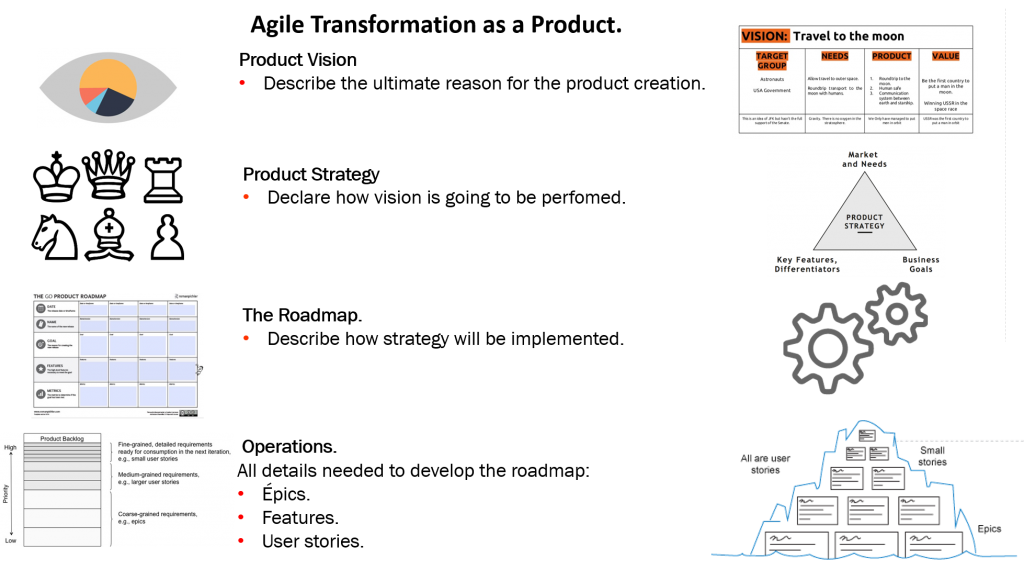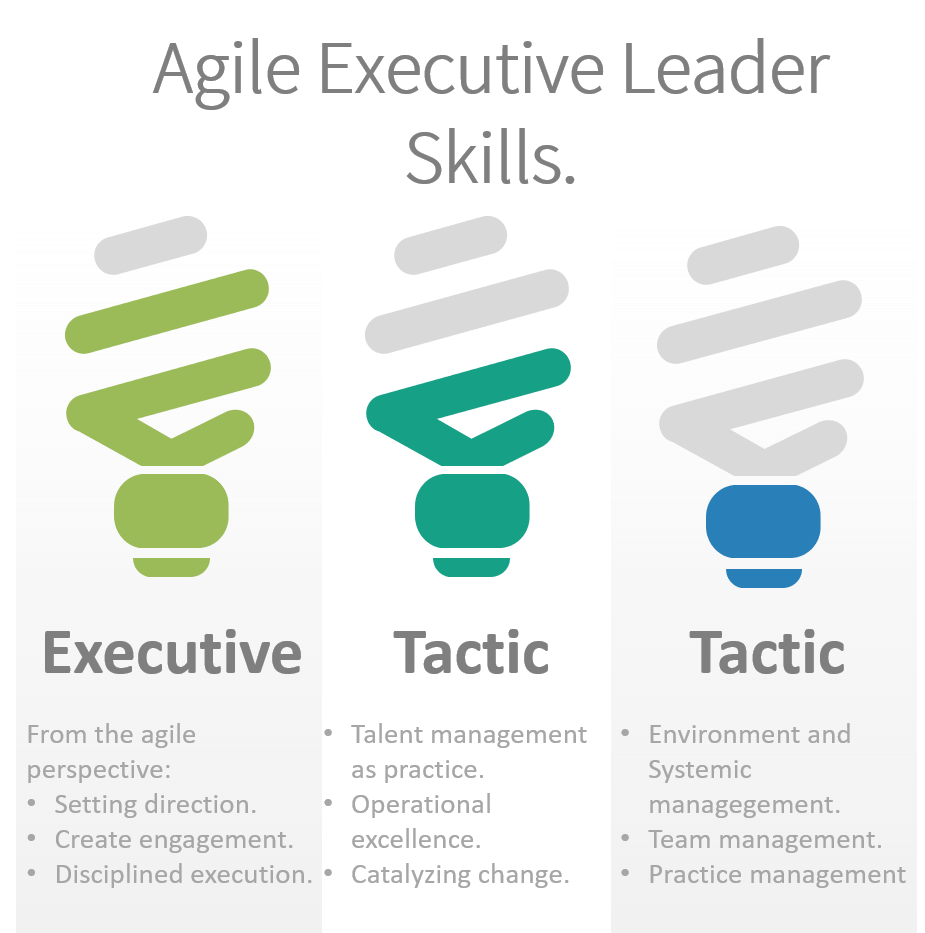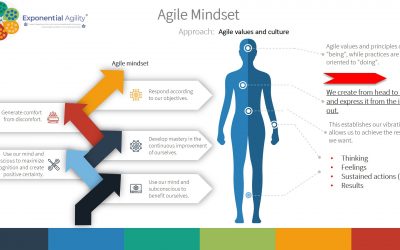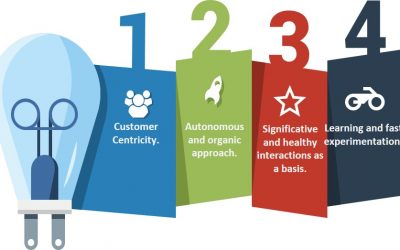
Image rigths reserved to Darin McNabb, 31 jul. 2017
The Agile Executive Leader.
In an agile environment, as agile leaders it is necessary to co-create, socialize our vision and transformation strategy, so that we can describe it, communicate it, test it, adjust it and refine it together. A product canvas and/or business model canvas, can help us to land them, perhaps an inception workshop, can be useful for us to co-create a first version, which surely will be very different from real execution. So, when we talk about it from an agile perspective, we must focus on the following:
- Create a vision or a massive transforming purpose, giving cohesion both to our company and to our community and / or sector (remember that now our product will be the agile organization).
- Describing how that vision or purpose will be realized is our strategy.
- A road map, contingent and incremental, as the strategy will be implemented, may be program increments, periods of time greater than one sprint and / or less than 3 months, time in which everything can change.
- Let the tactical and operational teams outline the necessary details to develop our tactic, in a very close time frame, by cycles or sprints.
- Consider that we must inspect and adapt this approach at least every 3 months, to assess that we evolve and that we pivot.

Each opportunity window of our route map should clearly describe where we want to go? In what way do we realize if we are succeeding with our objectives? And what things will we do to achieve them? so that our initiatives are deliberately defined as hypotheses.
As agile leaders, we must know this approach, from strategy to execution, in such a way that we call ourselves agile leaders “executives”, who do not postpone the implementation and alignment of the strategy and execution, which must be adaptive to the market conditions and trends, to the company and its performance.
Thus, the skills of an agile executive leader are focused on generating habits from a set of consistent actions to understand what and how we add value to the organization, the way in which we must shape the appropriate culture to promote agility, from the people, in the business and from the point of view of execution, how to carry it out, creating teams, giving support in the removal of impediments, to create an organization backwards where we empower our players A and B, which are directly in contact with our customer.
These skills from my point of view we can place in at least 2 relevant categories:

Let us remember that in this environment the knowledge and deployment of the strategy, tactics and operation are agile, it is no longer only in the hands of a person, but it is a skill that every leader must develop for the synchronization of the value that he contributes.
Our next article will be focused on describing each of the skill categories of an executive agile leader.
Miguel Martínez, July 2020.
Bibliography:
- Pichler, R. (2016). Strategize: Product strategy and product roadmap practices for the digital age. Miejsce nieznane: Pichler Consulting.
- Scrum Alliance. Certification Types & Tracks. Retrieved July 15, 2020, from https://www.scrumalliance.org/get-certified
- Scrum ORG. Professional Agile Leadership™ Certification. Retrieved July 15, 2020, from https://www.scrum.org/professional-agile-leadership-certification
- Scaled Agile. (2020, July 01). Lean-Agile Leadership. Retrieved July 15, 2020, from https://www.scaledagileframework.com/lean-agile-leadership/
- Koning, P. (2020). Agile leadership toolkit: Learning to thrive with self-managing teams. Boston: Addison-Wesley.



